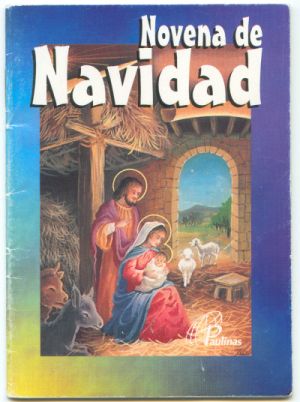My Christmas have always been since the night of Christmas (December 24) until Epiphany (Jan. 6). That is, since the Midnight Mass to the morning when you pick up furtively to see the toys you have been brought by the Three Kings while you were sleeping.

All this, in Colombia, had to be different to the force. But not only because it's the "Niño Dios" (an Infant Jesus from elementary school) who brings the gifts to Colombian children on Christmas Eve and people don't go to the Midnight Mass (for the astonishment of my mother) but because it's 9 days before when they really start their Christmas: the nine days of the novenas de aguinaldos (es).
So, every day from December 16th to Christmas Eve all families meet with their novena's booklets. You'll see lots of people gathered to pray the novenas in public places like parks and malls, but the tradition tells to do it at home or maybe changing the place every day from one family member's home to another.
It's such an established and widespread tradition that you don't need at all to go to the church to get your novena's booklet. You'll find them at almost any mall (with its adverts, of course).

Novena de Aguinaldo
(c) Instituto Misionero Hijas de San Pablo (es)
Tradition the children to be the ones to read by turns each one of the prayers and, after the corresponding Lord's Prayers and Hail Maries comes the Christmas carols, and finally the food. But I must admit that the carols, which is music at last, is the most eagerly awaited by those present because, as any good Colombian would do, there is almost nothing better than music and dance, not even the food no matter how good it would be. Just another cultural difference between Catalombian people from both sides of the sea).
I've always found that this tradition, endemic to Colombia, is an excellent way to gather the family to pray, even if they are just waiting for the music or food. On the other hand, which I don't mean to amend the author of these prayers, I'd update their vocabulary a bit, especially if we want our children to be the ones to read them. I mean that that year after year, novena after novena, I need to hide my perplexity in front of some verses (what the f*ck may mean "humanado" or "do su niño vean"? There must be some other synonym and easier to read, isn't it?)
Anyway, from the bottom of my heart, happy Christmas to all.
By the way, those of you who are catalombians outside Colombia, have you ever tried to export the novenas? How did it go?
I'll tell you later how it did to me and my family ;)
UPDATE: A fellow reader has provided a link that could help other english-speaker people to be able to pray the novenas. It's from El Colombiano's Novena de Navidad and this is its automatic translation thanks to Google Translator.
Thank you and merry christmas! :)
Powered by Qumana











